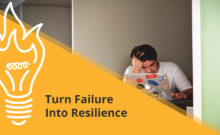Do you have a compelling case for why your product is superior to that of your competitors? How do you make your business stand out? And how do you make sure your business is sustainable? These are the questions that keep every entrepreneur up at night. Fortunately for you, we at Pitch Deck Fire are here to help.
Make a Compelling Case
Focusing on what differentiates you and your company will set you apart in the marketplace. It’s the key to attracting new customers: they’ve got a problem, and your solution stands out against all other competitors.
So ask yourself: How do your customers experience this problem? What is their pain? Is it something they can live with? How is it affecting their finances, time, health, and overall freedom and well-being?
It seems like a very basic distinction, but remember: the problem is not yours, it’s your customer’s. Even if you think you know what they are experiencing, you should get in touch with your customer. You should identify their problems, and then assess whether the solution you are proposing will make the difference you were expecting.
If you think you know what to expect, it’s important to go through this process. Because unfortunately, too many product developers start with their product or service, and completely ignore the end user or the buyer of the product. You have to have a lot of value for both of these positions. Especially when the buyers and end users are not the same person.
Getting in front of your customers means building relationships early on in the company’s—and product’s—development cycle. This is especially true if you find yourself in an undifferentiated industry, where everyone is basically selling the same thing.
What kind of experience is the industry creating for its users? What is the temperature level for change, and how likely are these users going to be to make the change? These are extremely hard businesses to gain significant traction in. And yet, they are also rife with opportunity for those working to customize service for their target markets.
Growth breeds inefficiency, and large players typically are not closely linking their customer’s value perception to the customer’s reality. There is plenty of opportunities for you to uproot the competition when these customers interact with your company.
So why would a customer switch? Delivering better, faster, or stronger solutions are all ways to give better service — for (hopefully) a lower overall cost compared to the value received. How are current solutions stacking up?
What is the general competition level—high and extremely competitive, or low and virtually unknown? We’d be lucky to be in the latter environment. But, to be fair, it’s likely it won’t be “unknown” for long if there is money to be made.
Stand Out
If you want to stand out, start by focusing on what is the same about you and everybody else in your industry.
Make a list of all the top players in the industry and add to it examples of up-and-coming or disruptive products that are being introduced. From there, you should see the competitors who are directly serving your market.
These competitors can show you the tried-and-true path. They can give you insight into what’s working. And their customers can give you insight into what’s not. From these insights, you can better understand how you fit in.
You can also gauge your own solution’s likelihood for success, through your ability to compete differently or better than what’s already out there.
An important consideration is keeping an eye on the bigger picture. Technology is disrupting industries at a rapid pace. Put efforts on knowing your customer’s usage of substitute products and services. Likewise, look at trends that might render your industry obsolete. These are all at the forefront of designing well-crafted, long-term, and value-oriented business models.
External environments like competitors, substitute products, and trends can all be assessed to prepare your company for the adaptations necessary for survival in changing circumstances. You are in control of the evolutionary path of your company. Keeping the right perspective and focus on what’s happening around you will keep you agile and responsive in the long-run.
Similarities are things that are common between you and all the other competitors and substitute companies that make up your industry. It might be the degree you have or the types of products and services you offer. It might also be the type of people that you hire or the way you go about getting business.
The underlying theme with finding commonality here is that everyone else in the industry is going to have the same types of elements in their business. If your business doesn’t have these things, it can really hold you back.
Consider licensing standards: they keep un-credentialed people out of the industry. Licensing standards allows everyone with a certain credential a little more protection from competition.
For instance, if you don’t have a law license, you can’t practice law. So earning a law degree is the bare minimum entry point to being a lawyer. Passing the bar is the secondary entry point for being a lawyer. Without these two, you cannot be a practicing lawyer. So law as a profession controls entry, and ultimately keeps competitors out of the industry with this type of structure. The same thing is true for taxi cab companies and medallions.
So just because something is similar doesn’t mean it’s noncompetitive, it just means that everyone else in the industry is going to have the same thing—and you either need to be on par to play, or you need to do something in a different industry.
The second question is: what do you do better or different than what’s already out there? What about your difference will attract customers? Keep looking internally to analyze your company’s strengths and bring them to the surface.
Keep everyone focused on the 5-10% that truly matters and differentiates you. Differences can be vast, so it’s important to center on those that provide the most value for the customers and generate real business outcomes.
These outcomes can be interested users, paying customers, lower costs, better services, and overall better outcomes (both internally for your employees and externally for your customers).
Sustainability
Ultimately, running your own business is no different than a regular job if you don’t have the ability to get a team around you. What can a team do better? Glad you asked. Teams can:
- Solve problems faster
- Spots weaknesses before they become issues
- Track industry trends—including potential opportunities and risks
- Synthesize many points of view when making decisions
Sustainability from a team approach means that you are creating process-oriented organizations that are built on learning and growth. All the previous suggestions keep you focused on research and being aware. But a solid team is at the heart of how you do everything.
Research, hypothesizing, testing, processing, improving, and advancing in the right direction will solidify the flat structure of your organization and help those coming on board to move past a pre-created structure and do what’s best for the company today.
Center learning at the heart of your company’s leadership, and it will trickle down to create a culture of humility and growth. New hires are assumed to be smarter than their peers, and the ability to work together on a common purpose is why everyone stays at the same level.
Everyone is building themselves, growing and focusing on getting the most important things done every day will make a company that reflects the same. If you stay focused on learning and scale your processes through hiring top-notch talent, your company will stand out from the crowd through a commitment to sustainable growth.






